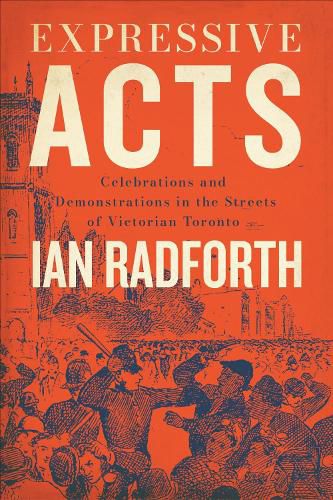Readings Newsletter
Become a Readings Member to make your shopping experience even easier.
Sign in or sign up for free!
You’re not far away from qualifying for FREE standard shipping within Australia
You’ve qualified for FREE standard shipping within Australia
The cart is loading…






In nineteenth-century Toronto, people took to the streets to express their jubilation on special occasions, such as the 1860 visit of the Prince of Wales and the return in 1885 of the local Volunteers who helped to suppress the Riel resistance in the North-West. In a contrasting mood, people also took to the streets in anger to object to government measures, such as the Rebellion Losses bill, to heckle rival candidates in provincial election campaigns, to assert their ethno-religious differences, and to support striking workers.
Expressive Acts examines instances of both celebration and protest when Torontonians publicly displayed their allegiances, politics, and values. The book illustrates not just the Victorian city's vibrant public life but also the intense social tensions and cultural differences within the city. Drawing from journalists' accounts in newspapers, Expressive Acts illuminates what drove Torontonians to claim public space, where their passions lay, and how they gave expression to them.
$9.00 standard shipping within Australia
FREE standard shipping within Australia for orders over $100.00
Express & International shipping calculated at checkout
Stock availability can be subject to change without notice. We recommend calling the shop or contacting our online team to check availability of low stock items. Please see our Shopping Online page for more details.
In nineteenth-century Toronto, people took to the streets to express their jubilation on special occasions, such as the 1860 visit of the Prince of Wales and the return in 1885 of the local Volunteers who helped to suppress the Riel resistance in the North-West. In a contrasting mood, people also took to the streets in anger to object to government measures, such as the Rebellion Losses bill, to heckle rival candidates in provincial election campaigns, to assert their ethno-religious differences, and to support striking workers.
Expressive Acts examines instances of both celebration and protest when Torontonians publicly displayed their allegiances, politics, and values. The book illustrates not just the Victorian city's vibrant public life but also the intense social tensions and cultural differences within the city. Drawing from journalists' accounts in newspapers, Expressive Acts illuminates what drove Torontonians to claim public space, where their passions lay, and how they gave expression to them.